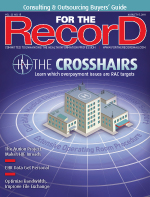 August 15, 2011
August 15, 2011
Coding for Norovirus
For The Record
Vol. 23 No. 15 P. 27
Norovirus is a major cause of acute gastroenteritis and is found in the stool and vomit of an infected person. It may cause diarrhea, vomiting, and abdominal pain within 12 to 48 hours of exposure and is most commonly seen in crowded environments such as hospitals, nursing homes, and cruise ships.
Norovirus is classified to ICD-9-CM code 008.63. Other viruses that may cause gastroenteritis include the following:
• Rotavirus (008.61);
• Adenovirus (008.62);
• Other small round viruses (008.64);
• Calicivirus (008.65);
• Astrovirus (008.66);
• Enterovirus (008.67); and
• Other viral enteritis, including torovirus (008.69).
Acute gastroenteritis without further specificity is assigned to code 558.9. Viral gastroenteritis and stomach flu without specification as to the virus goes to code 008.8.
Most cases of norovirus, also called Norwalk virus, may last from one to three days and may not require treatment. It typically is not that serious, and it does not cause long-term health effects. However, in infants, geriatric patients, and immunocompromised patients, the sufferer may become dehydrated and require medical attention.
Norovirus is extremely contagious and spreads easily through food or water contaminated by fecal matter during food preparation. The virus can also be spread through close contact with an infected person. Methods of transmission include eating contaminated food, drinking contaminated water, touching the mouth with a contaminated hand, and eating undercooked shellfish from contaminated waters.
It is difficult to kill the virus because it can withstand hot and cold temperatures and most disinfectants. A person infected with the norovirus does not become a long-term carrier, and a person can have the illness multiple times if he or she comes into contact with the virus again because of the many different strains that exist.
Symptoms
The following are the common symptoms associated with norovirus:
• nausea;
• vomiting;
• abdominal pain;
• abdominal cramps;
• watery or loose diarrhea;
• weight loss;
• malaise;
• low-grade fever;
• chills;
• headache;
• muscle aches; and
• general tiredness.
Some complications a patient may experience if the norovirus infection is severe include the following:
• dehydration;
• bloody stools; and
• malnutrition.
Warning signs of dehydration may include the following:
• sunken eyes;
• dry mucus membranes;
• tenting (pinched skin that stays elevated instead of returning to its normal position);
• headache;
• dizziness/orthostatic hypotension; and
• fatigue.
Diagnosis and Treatment
The physician may suspect norovirus based on symptoms alone and the patient’s exposure. However, to be able to identify the specific virus involved, a stool sample will be tested. Most patients are not admitted to inpatient status for the treatment of norovirus. However, if the patient develops dehydration, admission may be required for the administration of IV fluids.
Coding and sequencing for the treatment of norovirus are dependent on the physician documentation in the medical record and application of the Official Coding Guidelines for inpatient care. Also, use specific AHA Coding Clinic for ICD-9-CM and American Medical Association CPT Assistant references to ensure complete and accurate coding.
— This information was prepared by Audrey Howard, RHIA, of 3M Consulting Services. 3M Consulting Services is a business of 3M Health Information Systems, a supplier of coding and classification systems to more than 5,000 healthcare providers. The company and its representatives do not assume any responsibility for reimbursement decisions or claims denials made by providers or payers as the result of the misuse of this coding information. More information about 3M Health Information Systems is available at www.3mhis.com or by calling 800-367-2447.
Coding for Norovirus in ICD-10-CM
In ICD-10-CM, norovirus is classified to code A08.11, Acute gastroenteropathy due to Norwalk agent. There is an Excludes 1 note under category A08 which states, “influenza with involvement of gastrointestinal tract (J10.81).” An Excludes 1 note means it is “not coded here.” In other words, coders are instructed to never assign this code along with the code indicated in the excludes note. Therefore, do not assign the norovirus code (A08.11) with the influenza gastroenteritis code (J10.81). Similarly, there is an Excludes 1 note under code J10.81 which states, “‘intestinal flu’ [viral gastroenteritis] (A08.-)”
Other viral gastroenteritis codes in ICD-10-CM include:
• Rotaviral enteritis (A08.0);
• Acute gastroenteropathy due to other small round viruses (A08.19);
• Adenoviral enteritis (A08.2);
• Calicivirus enteritis (A08.31);
• Astrovirus enteritis (A08.32);
• Other viral enteritis (A08.39), which includes coxsackie virus enteritis, echovirus enteritis, enterovirus enteritis, and torovirus enteritis;
• Viral intestinal infection (A08.4); and
• Other specified intestinal infections (A08.8).
— Audrey Howard



